Three works of art that remind us to revere Native American culture and craft
By Annie Carlano, Senior Curator of Craft, Design & Fashion, and Rebecca Elliot, Assistant Curator of Craft, Design & Fashion
Native American Heritage Day is celebrated the last Friday of November. Designated by President George W. Bush in 2008, it celebrates and recognizes the importance of Native Americans and their cultural heritage to our past, present, and future. Works of art by Native American artists encapsulate tradition, rich artistry, and stories that are passed down through generations. The Mint Museum’s Native Americas collection showcases works from Canada, the United States, Mexico, and Guatemala, from the nineteenth century to today. Objects from the Native Americas collection are on view at Mint Museum Randolph, as well as the Craft+Design galleries at Mint Museum Uptown. Following are three works of art by Native American artists that chronicle their roots, relationships, and environments.
Diego Romero
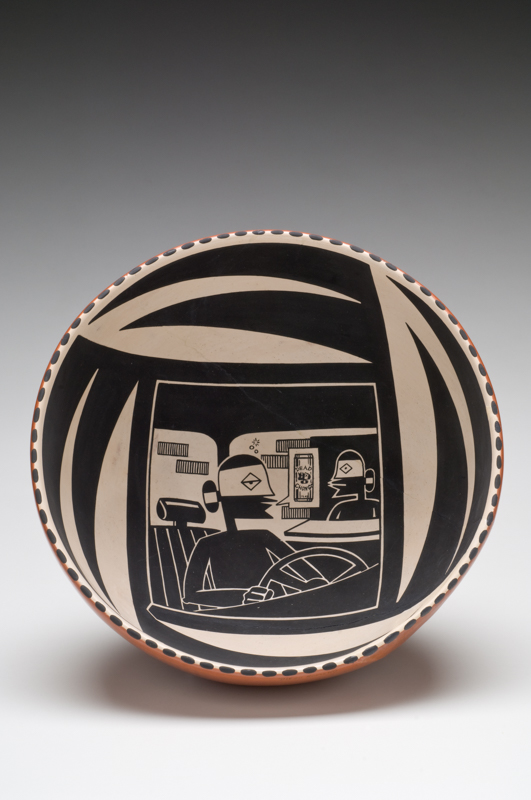
Diego Romero (Cochiti, 1964–). Bowl, late 20th century, earthenware with slip paint. Gift of Gretchen and Nelson Grice. 2017.43.34
This bowl is part of an ongoing series of ceramics and prints by Diego Romero that chronicles the adventures of the Chongo Brothers, named for a characteristic hairstyle of Navajo and Pueblo people, a bun gathered at the nape of the neck, the chongo. Romero’s ceramics are impeccably hand built with local clays from the hills of Northern New Mexico.
The strong graphic design is a combination of geometric motifs related to ancient Mimbres pottery, pop art and comic-strip aesthetics. Chronicling the societal injustice rampant on and off the reservation, Diego Romero sometimes softens these difficult narratives with his cartoonish style.
Trained at UCLA, his work is included in museums and private collections in the US and Europe. In 2019 Diego Romero received the Native Treasures Living Treasures Award, given to artists who have made outstanding contributions to indigenous arts and culture.
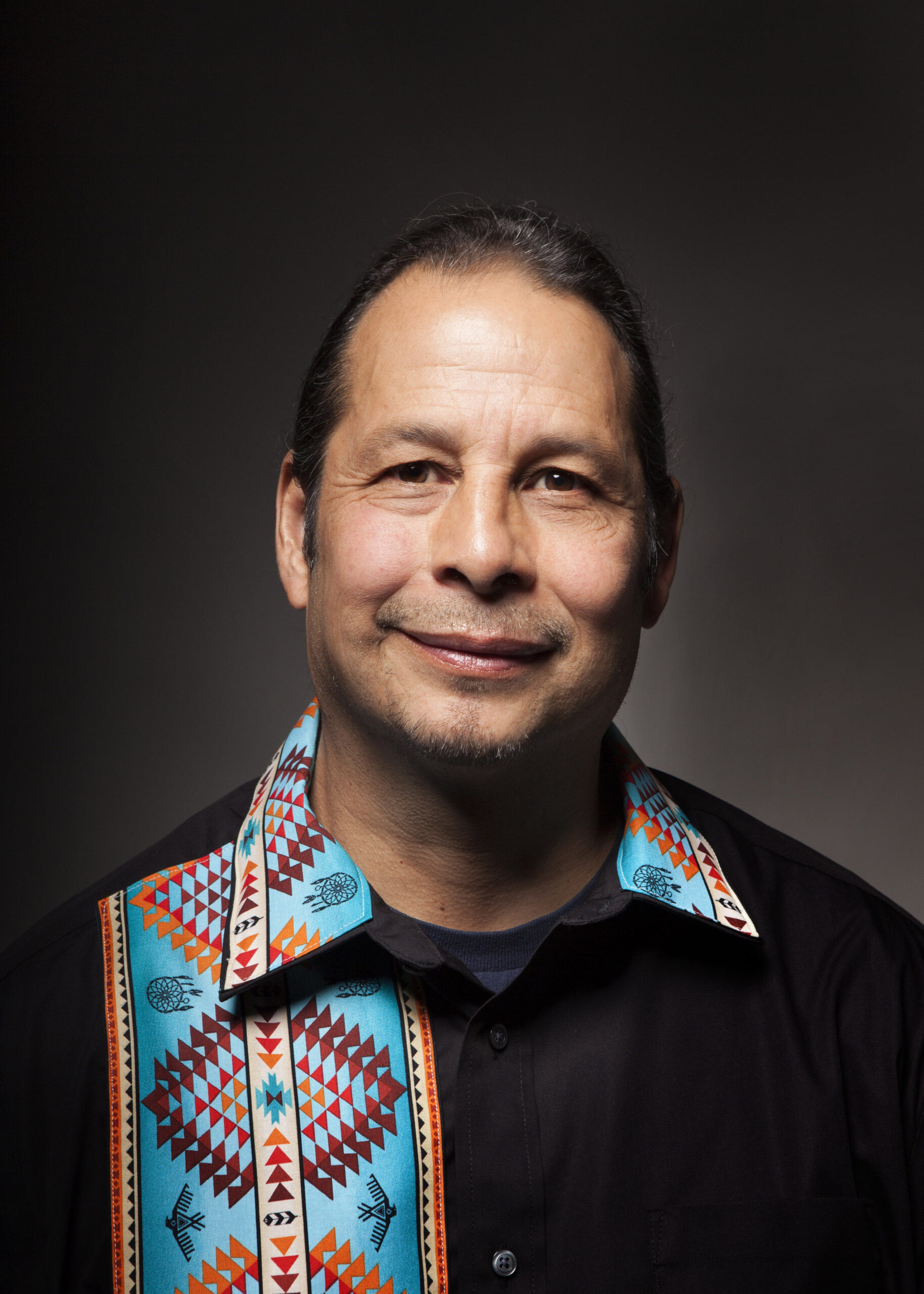
Diego Romero ceramics are hand built with clay from the hills of Northern New Mexico. Courtesy of Museum of Indian Arts and Culture
Diego Romero’s bowl is on view at Mint Museum Randolph, in an installation featuring Pueblo ceramics from the Grice Collection. Experience more of Romero’s work through a virtual tour of his current solo exhibition at the Museum of Indian Arts and Culture, New Mexico, Diego Romero vs. The End of Art
[cs_divider]
Susan Point
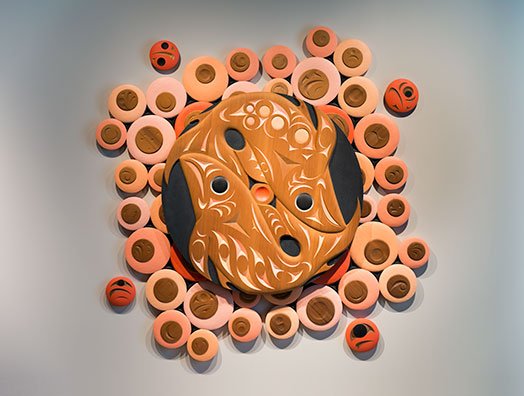
Susan Point (Canadian, Coast Salish [Musqueam First Nation], 1952–), Salmon Spawning Run, 2012, carved and painted Western red cedar. Project Ten Ten Ten commission. Museum Purchase: Funds provided by Fleur Bresler, Libba and Mike Gaither, Laura and Mike Grace, Betsy and Brian Wilder, Amy and Alfred Dawson, Aida and Greg Saul, Missy Luczak Smith and Doug Smith, Beth and Drew Quartapella, and Kim Blanding. 2012.107. Art © Susan Point 2012. Image © Mint Museum of Art, Inc. © Susan Point, 2012.
The round shape of Salmon Spawning Run is based on Susan Point’s well-established spindle whorl motif, which represents the Coast Salish, a First Nations tribe. For thousands of years salmon have sustained the Coast Salish people as the primary food source. As such, salmon are highly honored and respected. Symbolizing abundance, prosperity, renewal, and fertility, the fish and their eggs are depicted here in a composition that reminds us of the importance of clean water other sustainable resources to protect our natural environment. cedar from a tree trunk found on communal land, and painted the carved wood with natural pigments.
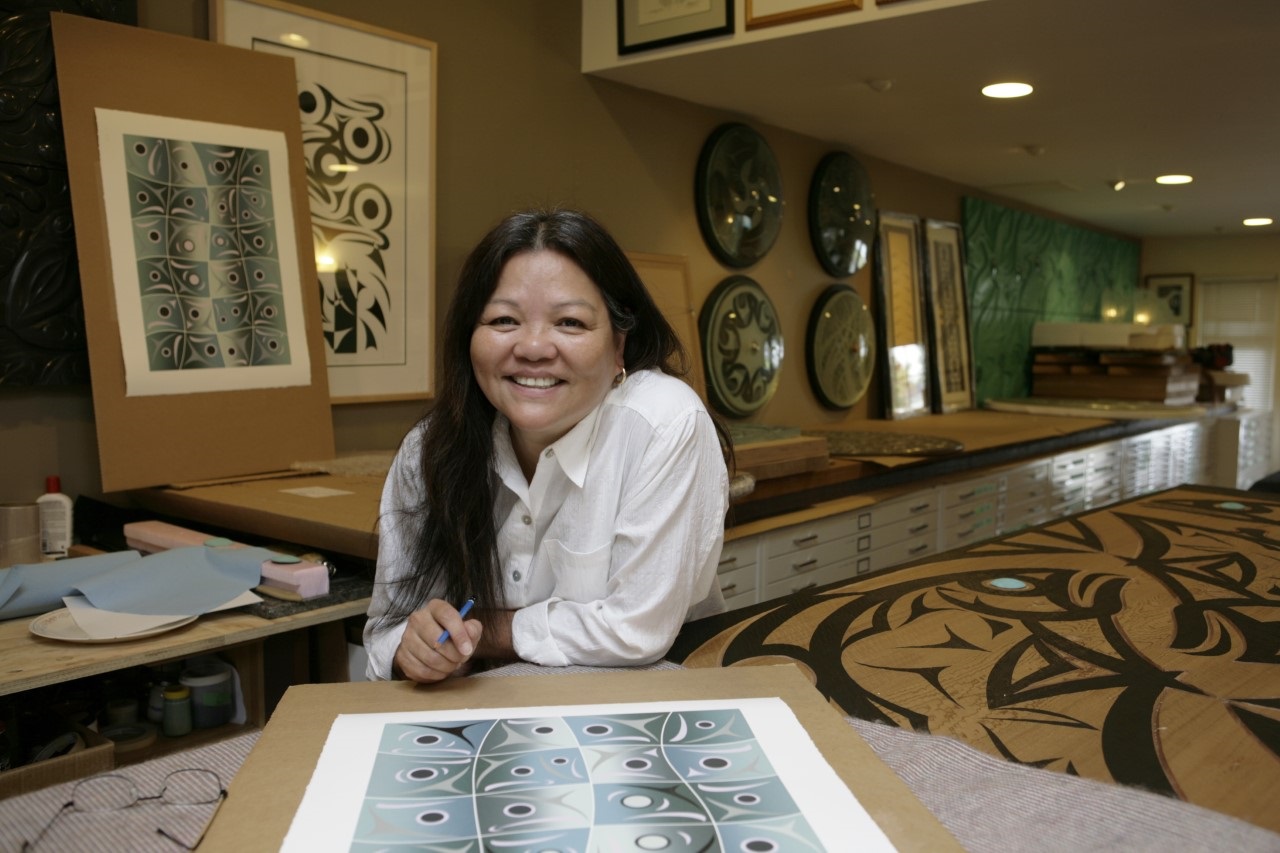
Susan Point’s artwork symbolizes the natural resources that are central to life of the Coast Salish, a First Nations tribe. Image courtesy of the artist
One of a group of artists responsible for the resurgence of Coast Salish art and culture, her public art projects include works at Vancouver International Airport and the Museum of the American Indian, in Washington, D.C. She has received numerous awards including the Order of Canada, Queen Elizabeth II Diamond Jubilee Medal, and a British Columbia Lifetime Achievement Award.
Salmon Spawning Run is a part of Project Ten Ten Ten and is a site-specific work on view in the Craft & Design galleries at Mint Museum Uptown.
[cs_divider]
Tara Locklear
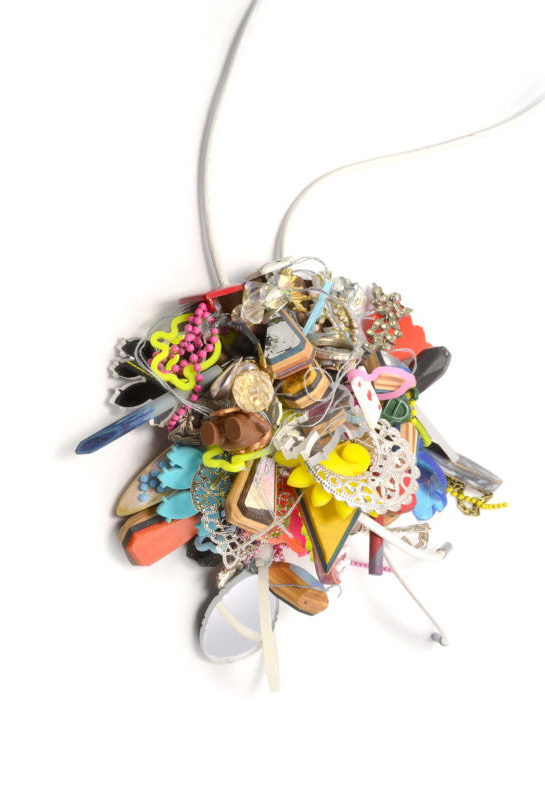
Tara Locklear (United States), Bobble for Bob Necklace, circa 2017, walnut, laser cut plexiglass, recycled skateboards, costume jewelry, oxidized sterling silver, and other mixed media. Gift of Porter • Price Collection. 2019.93.117
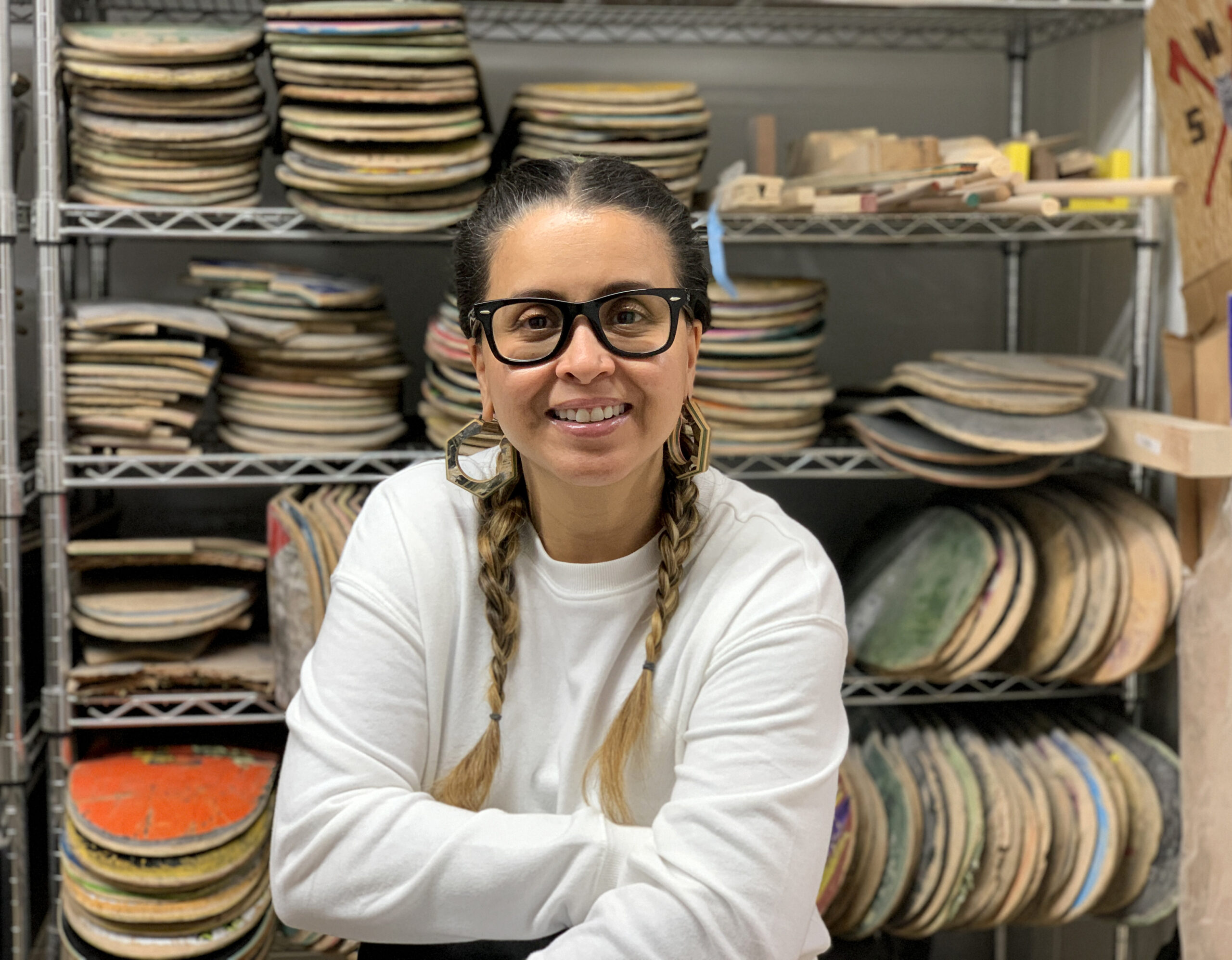
Tara Locklear’s one-of a kind jewelery is inspired by her environments and includes repurposed elements, such as wooden skateboards. Image courtesy of the artist
Tara Locklear’s jewelry is inspired by urban environments and includes repurposed elements such as pieces of wooden skateboards. She made this necklace as a tribute to her jewelry professor and mentor, Robert Ebendorf, after his retirement from East Carolina University (ECU). Its materials range from ones she explored as a student there to ones she focuses on in her current practice. Locklear earned a BFA in Small Metals and Jewelry Design from ECU in 2012. She lives and works in Raleigh, North Carolina and is a member of the Lumbee Tribe.